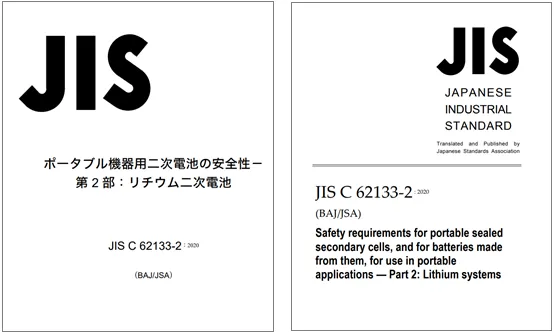The Ministry of Economy, Trade and Industry (METI) of Japan issued a notice on December 28, 2022, announcing the Interpretation of the Ministry's Order on the Development of Technical Standards for Electrical Supplies (Industry and Commerce Bureau No. 3, 20130605).
The original text of the METI announcement is as follows:
| 附 則(20221206保局第6号)この通達は、令和4年12月28日から適用する。ただし、この通達に よる改正後の別表第九の適用については、令和6年12月27日までは、なお従前の例によることができる。 |
The translation of METI announcement is as follows:
| This notice will come into effect from December 28, 2022, in the year of Linghe. However, according to this notice, the use of the revised ninth standard in the classification table can still follow the previous example until December 27, 2024 (December 27, 2024). |
Purpose of updating the PSE certification standard for circular batteries:
Intended to match the requirements of Appendix 12 (based on IEC international standards). This announcement will come into effect from the date of publication, with a transitional period of 2 years. Currently, the standards in Table 9 are applicable until December 27, 2024.
The impact of updating the PSE certification standard for circular batteries and the new certification requirements:
On August 26, 2022, the IECEE official website published the Japanese deviation J62133-2 (2021) (JP ND) of IEC62133-2, which means that CB reports with Japanese deviations can replace PSE circular reports and issue PSE circular certificates. Customers can also directly choose to use the Japanese standard J62133-2 (2021) (JIS C 62133-2:2020) to apply for the PSE circular certificate.
The circular PSE certification for batteries is based on the differential testing that needs to be supplemented by the battery CB:
If the customer's battery or cell has already passed the CB certification of IEC62133-2:2017, the J62133 test needs to be supplemented with the following difference tests:
1. 28 day constant voltage charging of battery cells
2. Temperature cycling testing of battery cells and batteries
3. Low pressure simulation test of battery cells
4. Cell high rate charging test
5. Battery overcharging protection function test
Post time: Mar-26-2024












